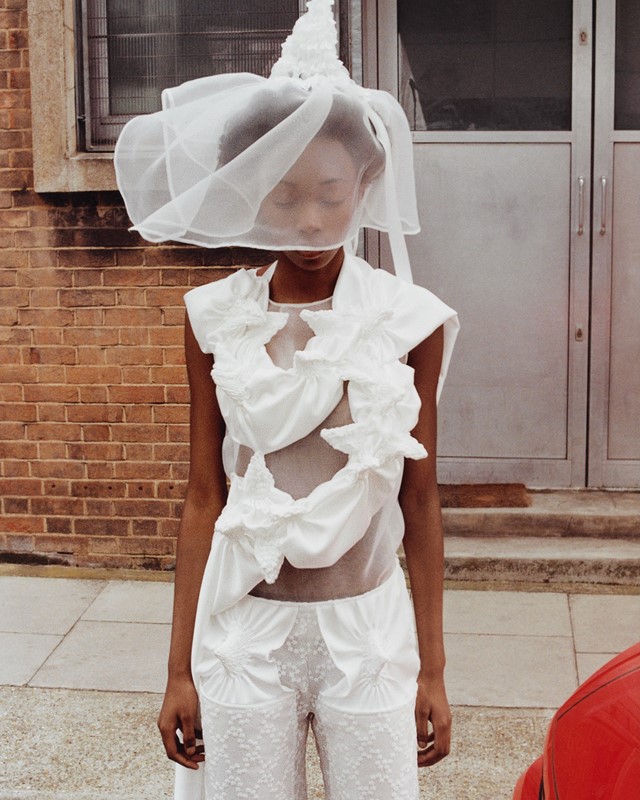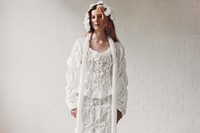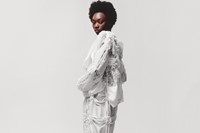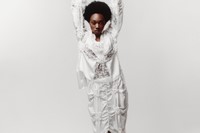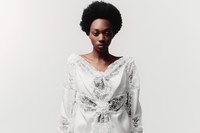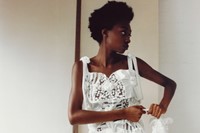Róisín Pierce delves into her approach to fashion and her new collection Two For Joy, which was sparked by memories of counting magpies in Galway during her early childhood
Dublin-based designer Róisín Pierce doesn’t begin her design process with sketches or moodboards, but the fabric itself. During her studies at the National College of Art and Design in Dublin, she trained in fine art textile design, where fabric manipulation, texture, and process were prioritised above churning out finished garments. “It was like sample, sample, sample,” says the Chanel Métiers d’Art award-winning designer. “Everything was about testing new ideas and that really stuck with me.”
While Pierce’s first collection, Mná i Bhláth (Women in Bloom) took influence from the difficult history of women’s rights within Ireland, from the Magdalene Laundries to the Repeal the 8th campaign, her second collection looks back towards the designer’s own childhood. Entitled Two For Joy, it was developed during lockdown, borne out of a desire to create something joyous and sparked by memories of counting magpies in Galway during her early childhood.
“The collection was [inspired by] these really excited and really precious memories I had in my childhood around creative discovery,” Pierce says. “When I looked back at the way that I was playing with things or the moments I remembered, there was a lot of beautiful light and starburst shine in my head. It was about referencing that in an abstract way. It fuelled a new kind of fabrication.”
Created in all-white, an aesthetic Pierce developed while studying and continued within her first collection as a tribute to the ‘white work’ women in the laundries would undertake, Two For Joy moves on from its predecessors in that it offers more breathing space between her signature textures. While previous collections have taken fabric manipulation to its fullest extent – smocking, ruffles, tucks, embroidery, and volume all colliding within frothy, sculptural forms – Two For Joy balances texture with the soft sheen of satin panelling, left to tell its own story.
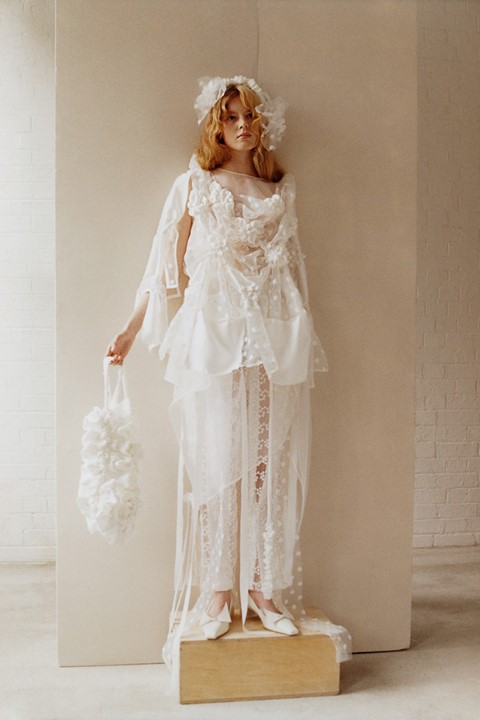
“While maybe the last few seasons were more texture on texture, there are more smooth surfaces,” Pierce says. “You see more of the embroidery, and when it’s incorporated with the smocking, they cast shadows and it’s beautiful. I just listened to the fabrics and how they wanted to work and went with that.”
Inherent in the light-as-air fabrication and the joyful childhood spirit encapsulated in her latest collection is the spontaneity of Pierce’s approach to craftsmanship. She began work on the collection armed only with a few images of starbursts before diving straight into sampling, creating star-like forms which echoed the expression and brightness of her childhood memories. “I call it working blind because I don’t know what the final thing is until it’s all manipulated and brought back to the stand,” she says.
Pierce employs zero-waste pattern-cutting practices wherever possible and sought to develop the technique further with this collection. Satin seams were left exposed and the strips and squares of fabric she works with were showcased rather than hidden via smocking and fabric manipulation to make zero waste manufacturing a central design feature.
Sampling, experimenting, and shaping to transform static pieces of cloth into garments that sit on the body with an effortless quality takes time and skill. “That’s something that can be tricky. You know, sometimes there are patterns for a reason,” she says. However, within the creative challenge of constructing in an unconventional manner lie opportunities for invention.
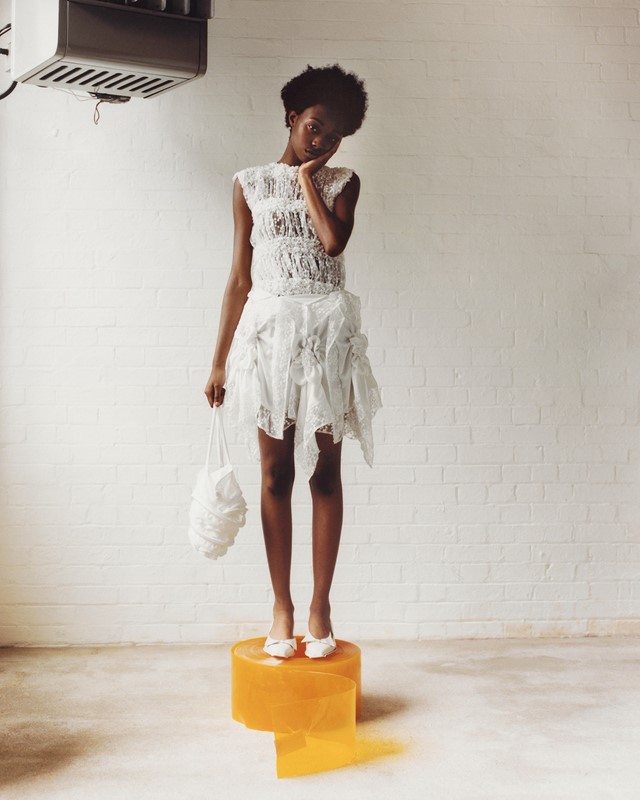
“For example, with the satin this season I really wanted to manipulate it into a tubular form, so I really just went with it, and it became a new direction silhouette-wise,” Pierce says. “It was a new exploration that wouldn’t have happened without my organic way of working.”
While previous collections – created annually, not seasonally – have been available on a made-to-order basis, Pierce is now manufacturing for stores for the first time. But though she is keen to grow her brand, she will not compromise on quality or her carefully cultivated practice of centring craftsmanship. “The ones who want me to scale up fast are the ones who don’t know what’s involved in developing a collection or how production works with these kinds of pieces,” she says.
To answer demand at a pace that preserves her guiding principles, she has gathered a small team of people whom she feels can replicate her style of working – at least in part. “I feel a tailor would find [my clothes] really difficult because it’s almost going against what’s supposed to be done,” Pierce says. “So, you need people who are open to another way of working.”
As Pierce’s work evolves and shifts thematically, and even as retailers seek to sell her creations to the masses, the delicate touch of skilled handcrafting remains ever-present and will ensure her clothes will sit as lightly on the environment as they do on the body.
